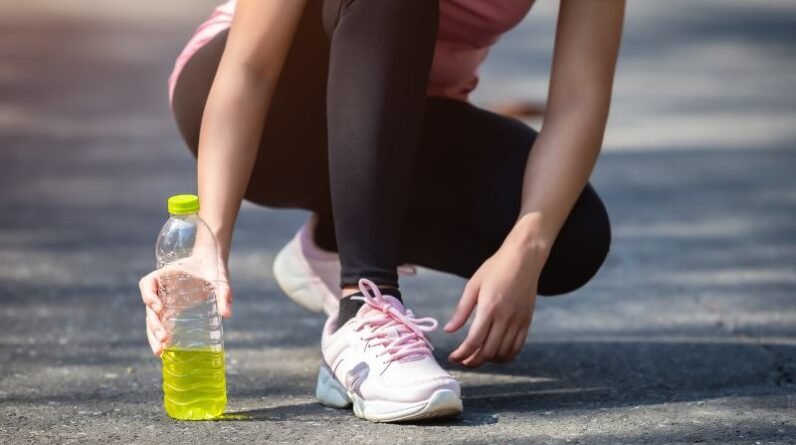
Electrolytes are essential for athletes, playing a significant role in fluid balance, muscle contractions, and nerve function. During intense exercise, we lose considerable amounts of electrolytes through sweat, particularly sodium and chloride. Proper replenishment is important for preventing muscle cramps, fatigue, and optimizing recovery. Water alone isn’t enough; we need to combine it with electrolyte-rich sources like sports drinks or foods high in potassium, magnesium, and calcium. Tailoring our electrolyte strategy to our individual sweat rates and composition can enhance performance and speed up recovery. By understanding the key facts about electrolytes, we can release our full athletic potential.
Understanding Electrolytes
Electrolytes are the unsung heroes of athletic performance. These minerals, which dissolve in water and carry electrical charges, play a significant role in our bodies. For athletes, understanding electrolytes is essential for peak performance and recovery. We lose electrolytes like sodium, potassium, calcium, and magnesium through sweat during intense exercise. These minerals are critical for maintaining fluid balance, enabling muscle contractions, and supporting nerve function. Without proper replenishment, we risk imbalances that can lead to cramps, fatigue, and confusion. Our kidneys work hard to regulate electrolyte levels, but during strenuous activity, we need to actively replenish them.
Consuming electrolyte-rich foods and beverages, we can support our body’s recovery process and maintain top performance. Mastering electrolyte balance is key to enhancing athletic prowess and preventing performance-hindering symptoms.
Electrolyte Loss During Exercise
Now that we’ve grasped the basics of electrolytes, let’s examine how they’re lost during exercise. Athletes sweat heavily during workouts, shedding significant amounts of sodium and chloride. This electrolyte loss varies greatly among individuals, affecting hydration levels and performance. Simply drinking water isn’t enough; it can dilute internal electrolyte concentrations, leading to imbalances. To maintain electrolyte balance and prevent issues like muscle cramping, dizziness, and fatigue, we need active electrolyte replenishment.
This is especially essential during long or intense sessions. By understanding our personal sweat rates and composition, we can tailor our fluid intake strategies. Combining water and electrolytes in our hydration plan is key to optimizing recovery and maintaining peak performance. It’s not just about replacing what’s lost; it’s about strategic replenishment for sustained athletic excellence.
Recovery and Electrolyte Replenishment
After intense exercise, our bodies crave more than just water to bounce back. Proper electrolyte replenishment is essential for ideal recovery and athletic performance. We need to focus on replacing sodium and potassium, which enhance water retention and improve our hydration status. Aim for 180-250 mg of sodium and 10-100 mg of potassium per 8-ounce serving of your post-workout beverage.
Sports drinks or sodium-rich foods consumed immediately after workouts are more effective than water alone in replacing lost electrolytes. Adding carbohydrates to this mix further supports recovery by providing energy for muscle repair. To mitigate the risk of muscle cramps and fatigue, we should consider continuous use of electrolyte supplements during and after exercise. This approach allows for customized performance enhancement and helps us maintain fluid balance, ensuring we’re ready for our next training session.
Optimal Electrolyte Sources
Understanding which foods and beverages offer the best electrolyte sources can greatly enhance our recovery strategy. Bananas and sweet potatoes are potassium powerhouses, providing 400-450 mg and 542 mg per serving, respectively. This mineral is essential for muscle function and recovery. We can’t overlook almonds, which deliver about 80 mg of magnesium per ounce, supporting energy metabolism and muscle regulation. For calcium, vital for muscle contractions, dairy products like milk offer around 300 mg per cup. When it comes to hydration and electrolyte replenishment, coconut water stands out as a natural, potassium-rich option. By incorporating these foods into our post-exercise routine, we’re giving our bodies the electrolytes needed for ideal recovery. Remember, a strategic approach to nutrition can greatly influence our performance and ability to bounce back after intense workouts.
Tailoring Electrolyte Strategies
The key to optimizing electrolyte balance lies in tailoring our strategies to individual needs. We must assess our unique sweat rates and electrolyte losses to create personalized hydration plans.
Let’s focus on four essential aspects:
1. Pre-workout preparation: Consume salty snacks or electrolyte beverages 60-90 minutes before exercise.
2. During exercise: For sessions over 30 minutes, opt for drinks with 60-120 mg sodium and 15-45 mg potassium per 8 ounces.
3. Post-workout recovery: Incorporate salty foods or sports drinks to enhance water retention and rehydration efficiency.
4. Extreme distance athletes: Increase sodium intake to 180-250 mg and potassium to 10-100 mg per 8 ounces.
Conclusion
As we’ve journeyed through the world of electrolytes, we’ve uncovered their pivotal role in athletic performance. Like a well-oiled machine, our bodies crave these essential minerals to function at their best. We’ve learned that replenishing electrolytes isn’t just about quenching thirst—it’s about fueling our recovery and priming ourselves for peak performance. By tailoring our electrolyte strategies, we’re not just crossing finish lines; we’re pushing the boundaries of our athletic potential. Let’s embrace this knowledge and elevate our game.






